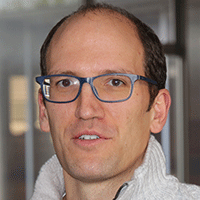Date: Sunday, June 11, 2023, 8:00-17:00
Instructor: Guillaume Ducrozet, Associate Professor, PhD, Ecole Centrale Nantes, LHEEA Lab (France)

Course Description: The design of marine structures is mainly driven by the forces induced by ocean waves. Then, the accurate description of those nonlinear waves is essential in ocean engineering. To understand, model and reproduce the propagation of complex wave fields (irregular, short-crested) in domains of significant size, the most relevant approach relies on the use of potential flow theory. Different approaches can be used to discretize and solve numerically the problem. This course aims to present one accurate and efficient methodology to address the fully nonlinear wave propagation problem, namely the High-Order Spectral (HOS) method. It includes a theoretical description of this nonlinear wave model with a focus on the numerical properties of the method. The advantages and drawbacks, compared to other existing approaches, are presented. Special emphasis is placed on the practical use of HOS models with recommended practices, taking as reference the open-source codes HOS-ocean and HOS-NWT. A specific section introduces the possibility of coupling between HOS and other models requiring the description of the velocity/pressure fields induced by the waves (such as CFD models to address the wave-structure interaction problems). The course is primarily intended for industry professionals, researchers, and graduate students in marine and offshore engineering who desire an introduction on nonlinear wave propagation models as well as those who are eager to perform nonlinear wave simulations for specific applications: Digital Twin of an experimental wave tank, specific irregular sea state configuration in open ocean, wave-structure interactions, etc.
What Will students learn in your course:
The students will learn the theoretical background of the HOS models as well as their numerical properties (convergence, efficiency, accuracy). The will learn how to use the open-source solvers HOS-ocean and HOS-NWT as well as how to choose the numerical parameters. After the course, they will be able to perform numerical simulations of nonlinear wave propagation of different types of sea states (regular waves, irregular waves, long- and short-crested) in an open-ocean context as well as in a wave tank. Finally they will know the proper methodology to couple the HOS solvers to other numerical codes such as CFD.